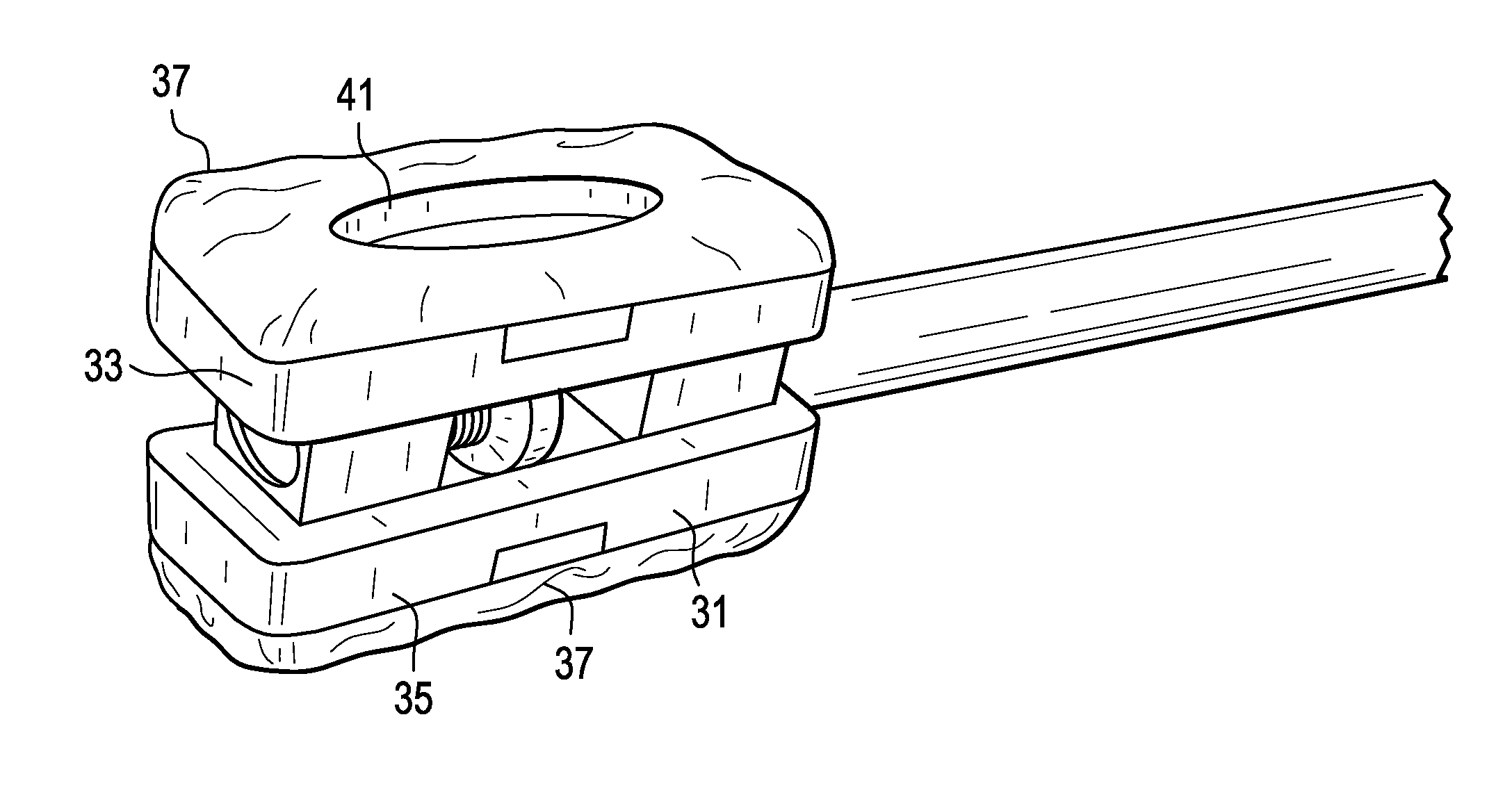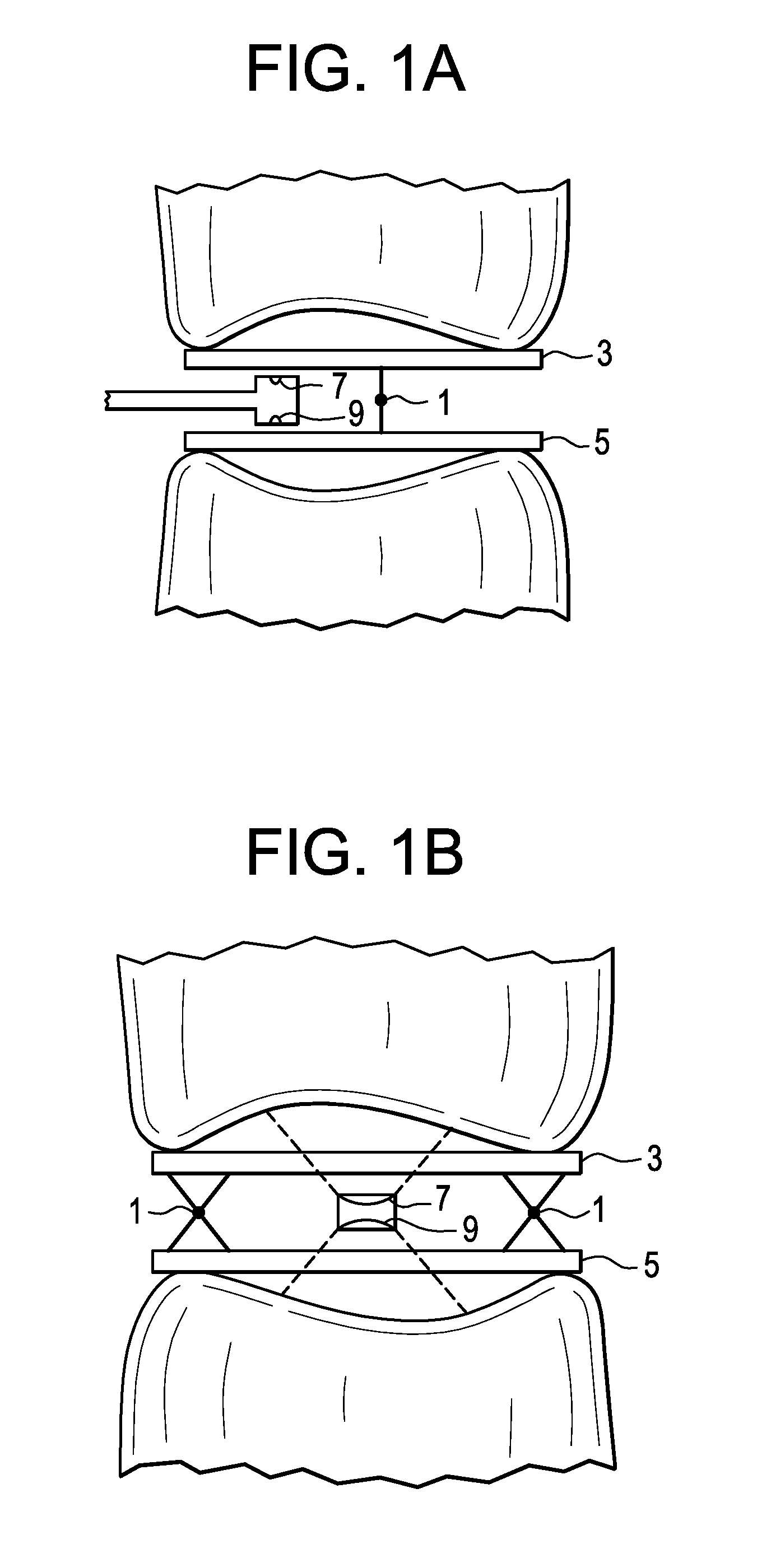Patient-Specific Spinal Fusion Cage and Methods of Making Same
- Summary
- Abstract
- Description
- Claims
- Application Information
AI Technical Summary
Benefits of technology
Problems solved by technology
Method used
Image
Examples
Embodiment Construction
[0036]In general, the trial of the present invention comprises the aforesaid distal portion, a proximal end portion comprising a handle, and an elongated intermediate portion. Preferably, the elongated intermediate portion comprises a rod. Also preferably, the upper and lower surfaces are substantially planar.
[0037]In one embodiment of the invention, the imaging feature comprises an endoscope having a light emitter, such as a fiber optic. In this embodiment, the light emitter emits light waves into the cavity between the trial and the vertebral endplate to create return signals. A monitoring system including a camera creates a 3D image of the cavity from the return signals. A screen may also provide a visual identification of the endplate contour.
[0038]In one embodiment, the fiber optic emits light waves from a tip of a fiber optic into the cavity between the vertebral endplate and the trial. Light waves are emitted at frequencies sufficient to image endplate contours. In this embod...
PUM
| Property | Measurement | Unit |
|---|---|---|
| Height | aaaaa | aaaaa |
| Thermosetting | aaaaa | aaaaa |
| Thermoplasticity | aaaaa | aaaaa |
Abstract
Description
Claims
Application Information
 Login to View More
Login to View More - R&D
- Intellectual Property
- Life Sciences
- Materials
- Tech Scout
- Unparalleled Data Quality
- Higher Quality Content
- 60% Fewer Hallucinations
Browse by: Latest US Patents, China's latest patents, Technical Efficacy Thesaurus, Application Domain, Technology Topic, Popular Technical Reports.
© 2025 PatSnap. All rights reserved.Legal|Privacy policy|Modern Slavery Act Transparency Statement|Sitemap|About US| Contact US: help@patsnap.com



